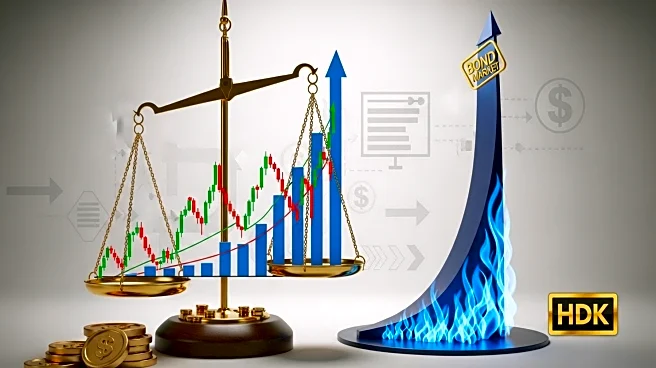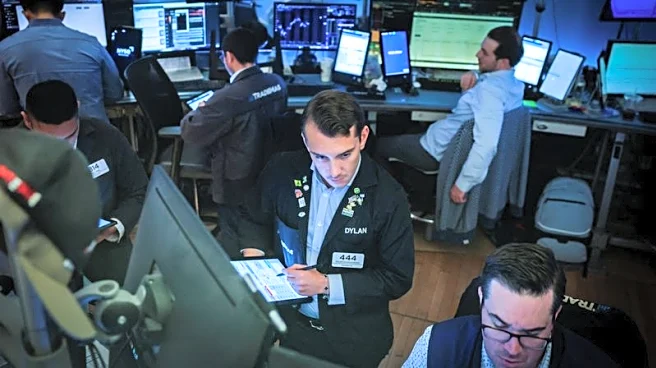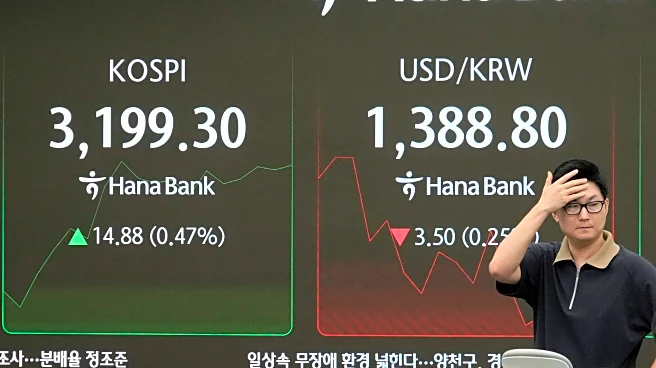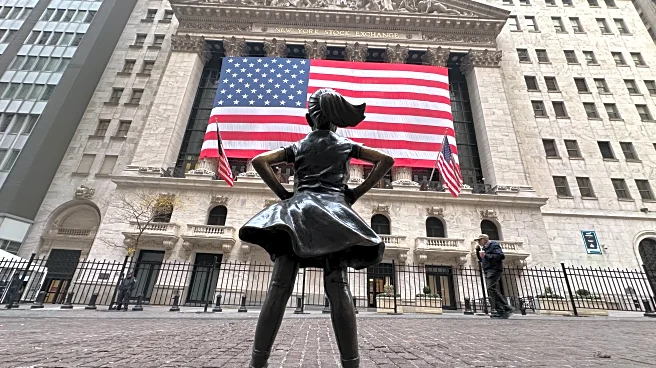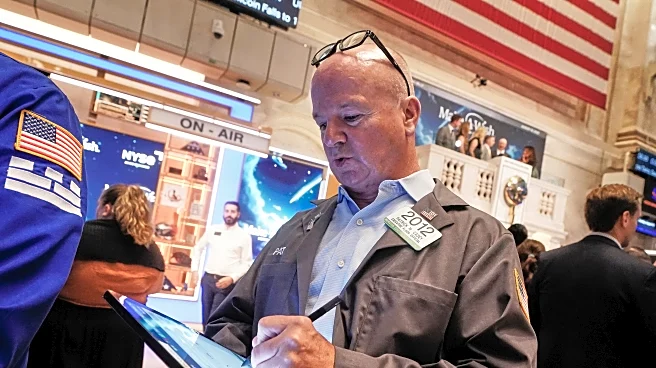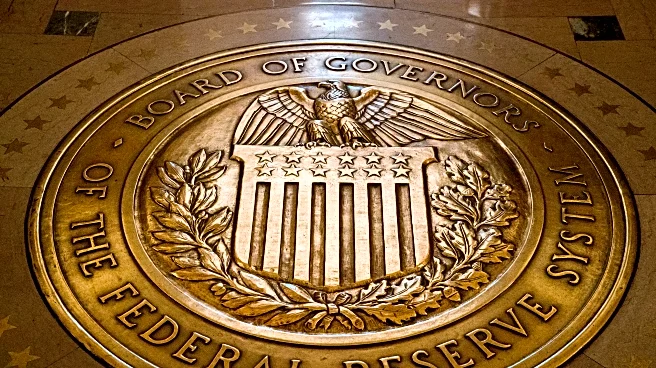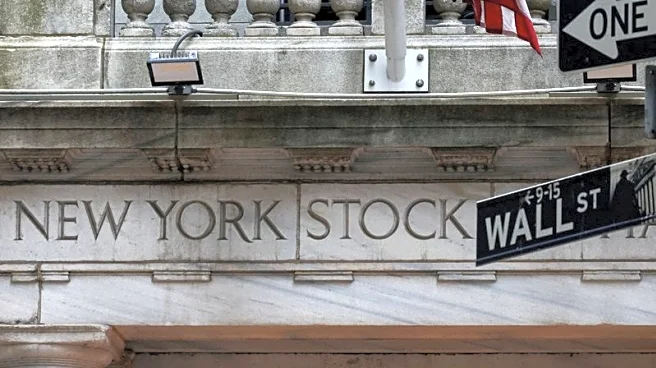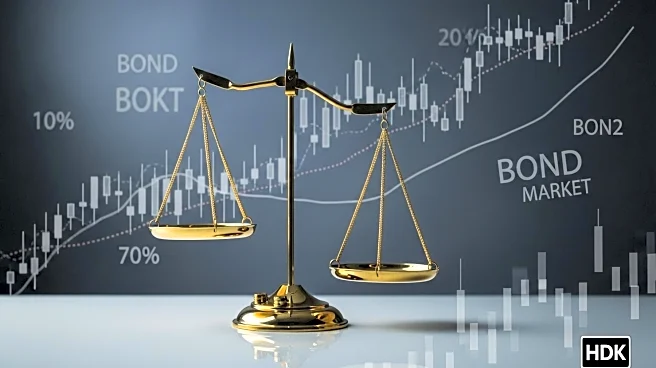What's Happening?
Wall Street and global stocks rose on Thursday, driven by expectations of a Federal Reserve interest rate cut due to a cooling U.S. labor market. U.S. private payrolls increased less than expected, and weekly jobless claims were higher than anticipated. These developments have led to a near-100% chance of a rate cut at the Fed's upcoming meeting. U.S. Treasury yields fell, with the 10-year note down 5 basis points, reflecting market anticipation of monetary easing. The dollar edged up against the yen and euro, while oil prices fell following reports of potential OPEC+ output increases.
Why It's Important?
The anticipated rate cut by the Federal Reserve is crucial for financial markets, influencing stock and bond prices. Lower interest rates typically boost equities by reducing borrowing costs and encouraging investment. The decline in Treasury yields indicates investor expectations of monetary easing, affecting bond market dynamics. The labor market's cooling signals potential economic challenges, prompting the Fed to consider policy adjustments. These developments impact various stakeholders, including investors, businesses, and policymakers, as they navigate changing economic conditions and market expectations.
What's Next?
Investors are closely watching upcoming economic data, including Friday's crucial jobs report, which could affect rate cut expectations. The Federal Reserve's decision at its September meeting will be pivotal, potentially influencing market strategies and economic policy. Political factors, such as concerns over Fed independence and trade policy implications, may further impact market sentiment. As the labor market continues to show signs of weakness, the likelihood of continued monetary easing remains high, affecting investment strategies and economic outlooks.
Beyond the Headlines
The broader implications of the Federal Reserve's anticipated rate cut extend beyond immediate market reactions. It raises questions about the central bank's independence and the influence of political factors on monetary policy. The nomination hearing of Stephen Miran, President Trump's pick for the Fed board, highlights potential tensions between government and economic institutions. Additionally, the focus on global market dynamics underscores the interconnectedness of economic policies and geopolitical factors. These developments may lead to long-term shifts in investment strategies and policy approaches.
